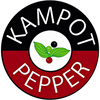Harvest, the most demanding time of the year
January to May means the most demanding part of the year for farmers. This is the time of harvest and careful observation of the stalks on which clusters of pepper berries sway. The moment these stalks begin to yellow, the pepper vine clearly signals that the right time for picking has come.

Harvesting during this period takes place continuously
And it is up to the farmers whether they harvest whole clusters of still green unripe pepper, or select individual already ripe berries. At the same time, they can also wait for the berries to fully ripen and pick them at the moment they are fully red, or harvest all the pepper from the vine and then subsequently select the red berries from the green ones.
This decision influences the flavor profile of the berries and the resulting color, thanks to which the offer includes black, red, and white pepper. However, you will not see white berries on the vines. These are obtained by soaking red pepper in boiling water (approximately 5 minutes) and then in cold water (maximum 48 hours). Subsequently, the skin is removed revealing the creamy white core. The processing of red and white pepper is thus the most demanding, the longest, and therefore these two colors are the absolute pride of Cambodia – few countries in the world can patiently pick berry by berry and further process them like this!

Cleanliness is also important
The subsequent work with the obtained grains follows a whole range of principles that primarily comply with hygienic rules. Both the containers used for storing pepper and the farmers' hands must be clean. The grains themselves can only be dried on three types of materials: nylon, classic natural mats, and canvas. During drying, no domestic animals have access to the grains.
At the moment when the grains are sufficiently dried in the sun, manual sorting takes place. This serves to remove all impurities that were collected from the vine along with the pepper grains as well as to select the grains themselves. After sorting, the grains are stored in a well-ventilated place, without exposure to sunlight, and so that no pests can reach them.
Subsequently, the pepper grains can look forward to their packaging, but more about that next time.






